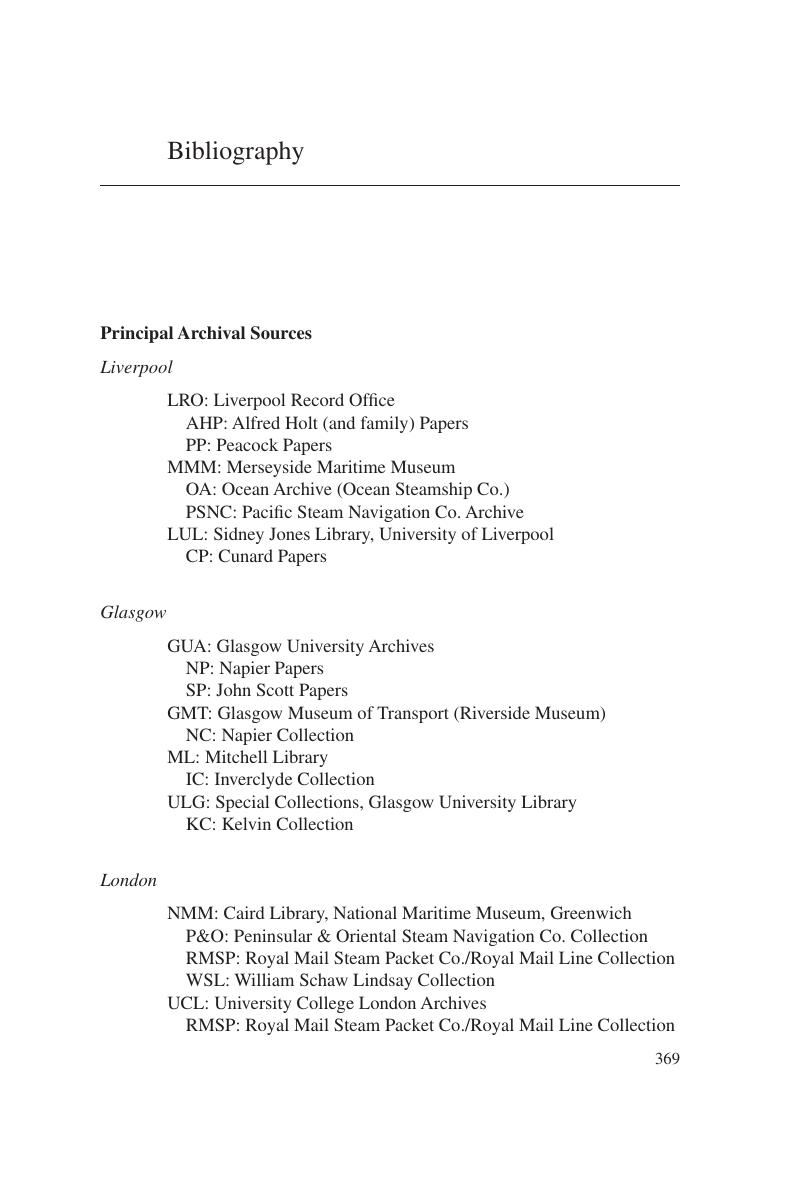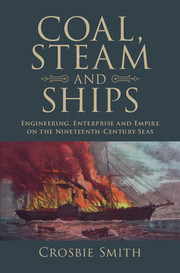Book contents
- Coal, Steam and Ships
- Science in History
- Coal, Steam and Ships
- Copyright page
- Dedication
- Epigraph
- Contents
- Figures
- Tables
- Acknowledgements
- Abbreviations
- Introduction: Coal, Steam and Ships
- Part I North Atlantic Steam
- Part II Westward for Panama
- Part III Eastward for India and China
- Part IV Engineering an Oceanic Economy
- Epilogue: ‘The Sovereignty of the Seas’
- Bibliography
- Index
- References
Bibliography
Published online by Cambridge University Press: 18 June 2018
- Coal, Steam and Ships
- Science in History
- Coal, Steam and Ships
- Copyright page
- Dedication
- Epigraph
- Contents
- Figures
- Tables
- Acknowledgements
- Abbreviations
- Introduction: Coal, Steam and Ships
- Part I North Atlantic Steam
- Part II Westward for Panama
- Part III Eastward for India and China
- Part IV Engineering an Oceanic Economy
- Epilogue: ‘The Sovereignty of the Seas’
- Bibliography
- Index
- References
Summary

- Type
- Chapter
- Information
- Coal, Steam and ShipsEngineering, Enterprise and Empire on the Nineteenth-Century Seas, pp. 369 - 386Publisher: Cambridge University PressPrint publication year: 2018



